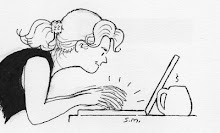I'm never not amazed by the city. A mere walk to the post office on a Tuesday can be an exercise in geometry, sociology, aromatherapy, and modern dance. But sometimes you're offered an experience that takes you outside—or way inside—the usual-unusual.
Today's gift: stillspotting nyc, a series of architectural/musical installations put on by the Guggenheim that involved moving among different New York City sites (several of them closed to the public, all of the installations created by Norwegian architectural firm Snøhetta) to experience a moment of stillness amidst the urban chaos, while listening to the music of Estonian composer Arvo Pärt.
Here's how the stillspotting website describes it:
The staging of five recorded works by Pärt gradually transports visitors from the hustle and bustle of the streetscape to an elevated urban experience that makes them newly aware of their sense of hearing. Visitors can experience this confluence of music and architecture at five separate locations downtown that quietly celebrate the city, ten years after the September 11 attacks.We didn't make it to the two sites on Governor's Island, but we did visit the three others, starting in Battery Park, where we walked a grassy labyrinth while listening (via iPods and headphones) to Pärt's "Silentium," the second movement of his Tabula Rasa, performed by the Lithuanian Chamber Orchestra.
What looks like a white comic-strip word balloon at the right edge of the photo is actually a weather balloon; these were the constants in each installation, apparently because they "have a unifying and holistic character and simultaneously create and ignore space."
Like this description, the labyrinth experience was one you could take very seriously or with a grain of salt. Several participants appeared to be in a mild trance...or under the influence. I dutifully walked the concentric circles toward the weather balloon, finding it calmingly mindless; others in our party quickly decamped to a bench and watched the goings-on from a remove. When my three companions were ready to leave before I'd quite finished my trek, I felt sort of guilty at the thought of barging across the bricks that marked my path—so I mimed clambering over a three-foot wall. What can I say? I was under the influence of Arvo Pärt.
We walked north along the Hudson River to the second site: the unoccupied 46th floor of the new World Trade Center 7, the last building to fall on 9/11 and the first to be rebuilt.
The floor was open on all four sides, allowing 360-degree views of the city, the harbor, the Hudson—and an aerial view of the new World Trade Center Memorial.
We were so close to the unfinished 1 World Trade Center (formerly known as the Freedom Tower) that if I weren't so acrophobic I'd have considered swinging across on a zipline.
 |
| 1 World Trade Center, reflecting WTC7 and the Woolworth Building. |
I preferred a slow meander along the four edges of the 46th floor.
Finally, we walked over to the spectacular 1913 Woolworth Building on Broadway, across the street from City Hall. The legendary lobby is closed to the public (a fact that makes my populist-minded Beloved very grouchy), so it's become an object of frustrated desire for many a tourist (and resident) eager to get a glimpse, only to be shooed out by zealous security guards. Even at a private art event, photographs and video were forbidden, so I've borrowed one from the stillspotting website:
ärt's "In Principio" for choir and orchestra. I looked up the whole time, trying to memorize the details of the arched mosaic ceiling, the gothic filigree on the walls, the gargoyle-ish faces (one with a snaggletooth), the sculptural caricatures, and the stained glass overhead bearing the names of countries (including Russia and the "German Empire") and the dates 1879 (when the first Woolworth store opened) and 1913 (when the building was completed).
For 19 minutes and 19 seconds, until the last strains of the music faded, I felt completely still, completely mesmerized, and completely grateful for the gifts of this city.









